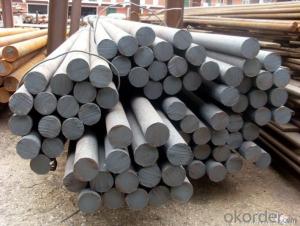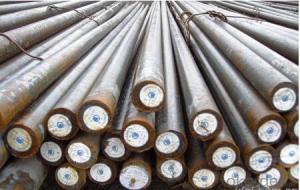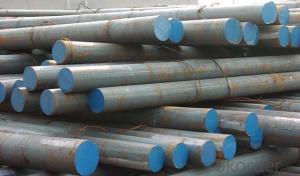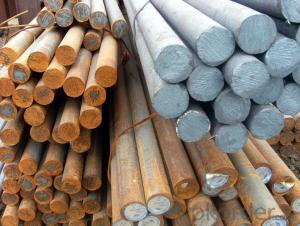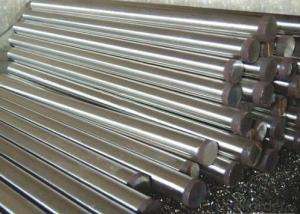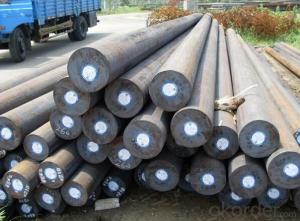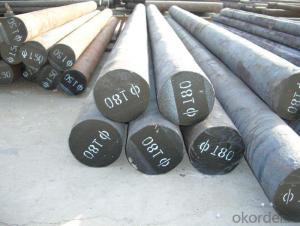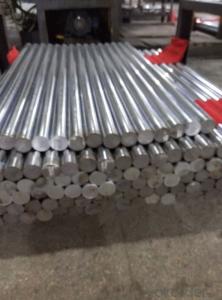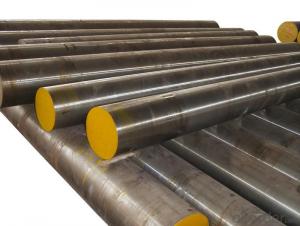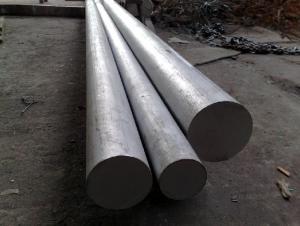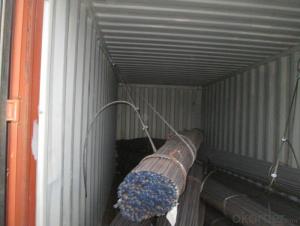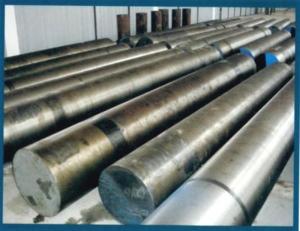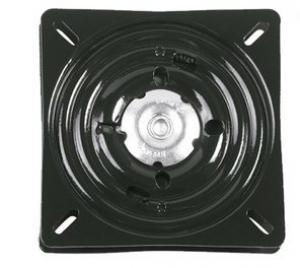52100 Bearing Steel Rounds Hot Rolled Treatment
- Loading Port:
- Tianjin
- Payment Terms:
- TT OR LC
- Min Order Qty:
- 25 m.t.
- Supply Capability:
- 50000 m.t./month
OKorder Service Pledge
OKorder Financial Service
You Might Also Like
Specification
52100 Bearing Steel Rounds Hot Rolled Treatment
Product Description:
Material | suj2 | ||
Chemical Composition | Mechanical Properties(In Quenched & Tempered State) | ||
C | 0.95-1.05 | Tensile strength(MPA) | ---- |
Si | 0.15-0.35 | Yield strength (MPA) | -- |
Mn | 0.25-0.45 | Elongation(δ5/%) | -- |
Cr | 1.40-1.65 | Reduction in Area (ψ/%) | -- |
Mo | ≤0.10 | Impact (J) | -- |
P | ≤0.025 |
Hardness | HB170-207 HB207-229 HB270-390 HB229-285 HRC62-66 HRC61-66 HRC≈67 |
S | ≤0.025 | ||
Ni | ≤0.30 | ||
Cu | ≤0.25 | ||
Ni+Cu | ≤0.50 | ||
Characteristics:
1) Good hardability and high toughness
2) Long fatigue life
3) Medium cold processing plasticity
4) Certain machinability
5) Poor weldability
Application:
1) Steel ball, roller and collar of large machinery bearing
2) High-hardness and high contact fatigue strength machinery parts with heavy load, such as axis of rotation, blade, stator pump, profiling, sleeve, mandril, etc.
Photos of our products:
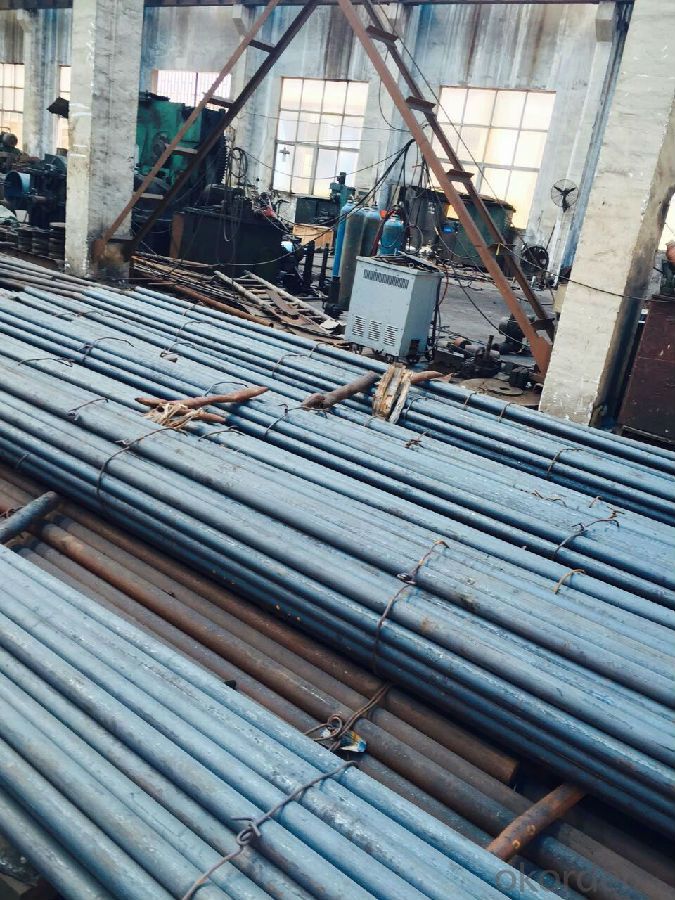
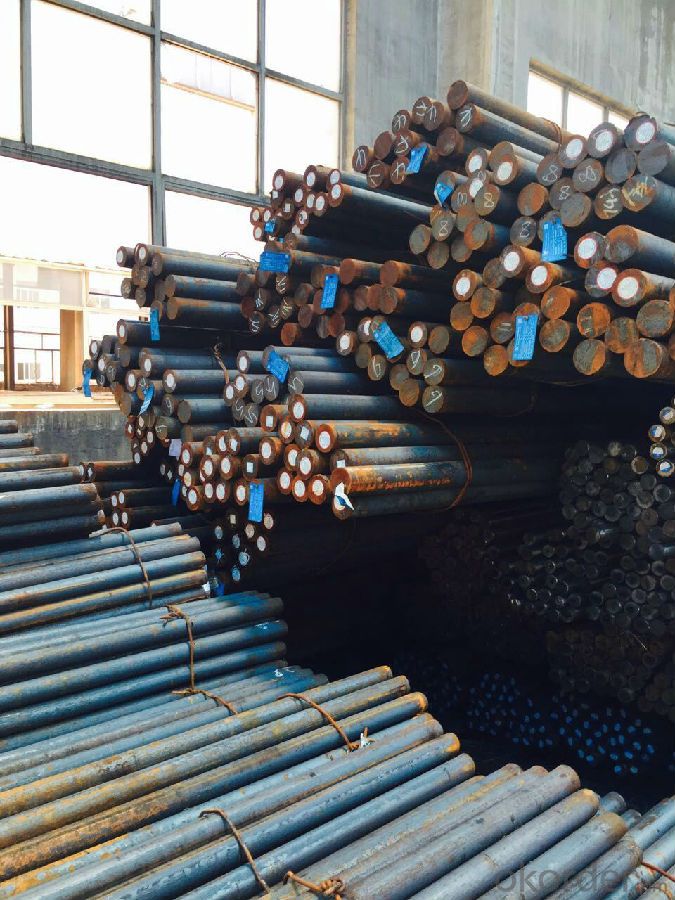
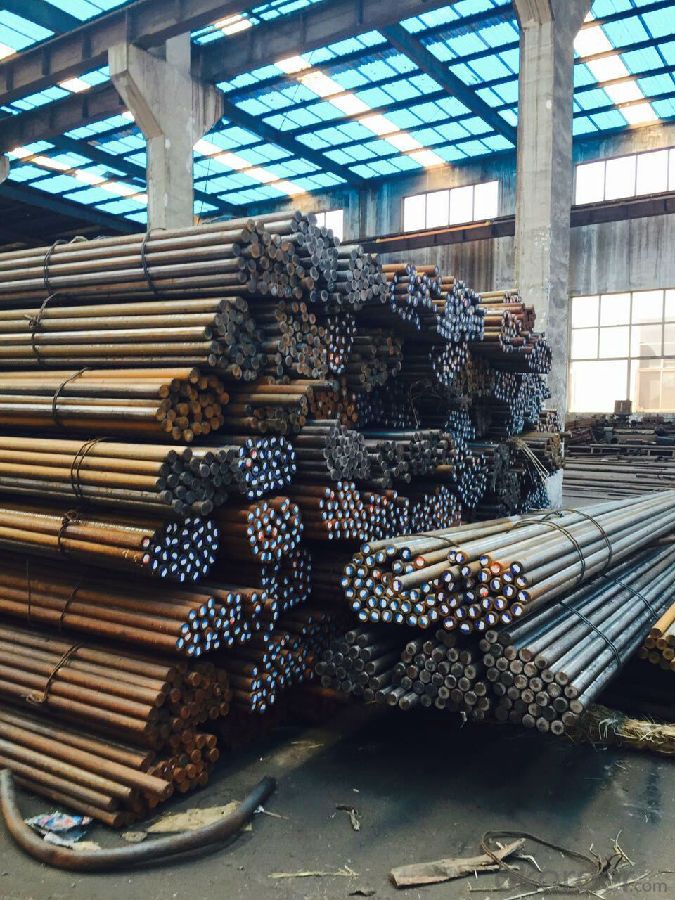
- Q: What are the properties of alloy steel?
- Alloy steel possesses a combination of properties that make it highly versatile and desirable in various applications. It exhibits enhanced strength, hardness, and wear resistance due to the addition of alloying elements such as chromium, nickel, and molybdenum. Alloy steel can withstand high temperatures, making it suitable for use in elevated temperature environments. It also offers excellent corrosion resistance and is highly durable, making it ideal for applications that require long-term reliability. Additionally, alloy steel can be easily machined and fabricated, further adding to its appeal in various industries.
- Q: How does special steel contribute to improving product performance under extreme conditions?
- Special steel contributes to improving product performance under extreme conditions by offering superior strength, durability, and resistance to corrosion. Its unique composition and manufacturing techniques enhance its ability to withstand high temperatures, pressure, and harsh environments, ensuring the product's reliability and longevity. Additionally, special steel's exceptional mechanical properties enable it to retain its structural integrity and functionality, even in challenging conditions, ultimately enhancing the overall performance and safety of the end product.
- Q: How is special steel used in the production of gears?
- Special steel is used in the production of gears due to its high strength and durability. It allows gears to withstand heavy loads, high temperatures, and constant friction. The use of special steel ensures that gears can operate efficiently and reliably in various industrial applications, such as automotive, aerospace, and machinery.
- Q: What are the different forging techniques for special steel parts?
- To produce special steel parts, there are various forging techniques available, which depend on the desired shape, size, and properties of the final product. Some commonly used techniques for forging special steel parts include: 1. Utilizing open-die forging involves shaping the metal between flat dies or anvils. It is suitable for simpler shapes and provides flexibility in producing a wide range of sizes. 2. Closed-die forging, also known as impression-die forging, involves shaping the metal within a closed die that contains the desired shape and allows for higher precision. It is commonly used for producing complex and intricate shapes. 3. Upset forging involves compressing and shaping the metal by applying pressure to the ends of the workpiece. This technique is often used to create parts with increased diameter or reduced length, such as bolts and nails. 4. Ring rolling is a technique that shapes a cylindrical workpiece by applying pressure from rotating rolls. It is commonly used for producing seamless rings with enhanced strength and durability, for example, gears, bearings, and flanges. 5. Isothermal forging is performed by forging the metal at a constant temperature, usually within a specially designed furnace. This technique allows for precise control over the metallurgical properties of the final product, resulting in improved mechanical properties and reduced residual stress. 6. Precision forging, also known as near-net-shape forging, uses specially designed dies to produce parts with minimal finishing operations. It is commonly used for complex shapes and high-volume production, ensuring cost-effectiveness and dimensional accuracy. 7. Press forging involves shaping the metal by applying pressure through a mechanical or hydraulic press. It allows for precise control over the forging process and is often used for producing high-strength, large-sized components. Each of these forging techniques offers unique advantages and is suitable for different applications. The appropriate selection of the forging technique for special steel parts depends on factors such as the desired shape, size, strength, and cost-effectiveness of the final product.
- Q: What are the different types of precipitation-hardening steel?
- There are several different types of precipitation-hardening steel, including 17-4 PH, 15-5 PH, 13-8 PH, and 17-7 PH. These alloys are known for their ability to be strengthened through a precipitation hardening process, which involves a combination of heat treatment and aging. Each type of precipitation-hardening steel has its own unique composition and properties, making them suitable for various applications in industries such as aerospace, automotive, and medical.
- Q: What are the main applications of special steel in the oil and gas equipment?
- Special steel is widely used in the oil and gas equipment industry primarily for its exceptional strength, corrosion resistance, and ability to withstand high temperatures and pressure. It is extensively used in the production of drilling tools, pipelines, valves, and other critical components that are required to operate in harsh and demanding environments. The main applications of special steel in this industry include drill bits, wellhead equipment, subsea equipment, and offshore platforms, all of which rely on the superior properties of special steel to ensure safe and efficient operations in the oil and gas sector.
- Q: What are the main applications of special steel in the mining processing?
- Special steel is widely used in mining processing due to its superior strength, durability, and resistance to extreme conditions. It is primarily used in the manufacturing of mining equipment such as crushers, conveyors, and drilling machines. Special steel is also utilized in the construction of mining infrastructure, including tunnels, shafts, and support structures. Additionally, it is employed in the production of wear-resistant components, such as grinding balls and liners, which are crucial for efficient ore processing. Overall, special steel plays a vital role in enhancing the productivity, efficiency, and safety of mining operations.
- Q: What are the limitations of welding special steel?
- There are several limitations associated with welding special steel. Firstly, special steels often have high carbon content or alloying elements, which can lead to increased susceptibility to cracking during the welding process. Additionally, special steels may have unique microstructures, such as high hardness or brittleness, which can pose challenges in achieving proper weld penetration and joint strength. Furthermore, the heat input required for welding special steels can result in distortion or warping of the workpiece, requiring additional post-welding processes to correct. Finally, special steels may require specific pre-welding preparations, such as preheating or special welding consumables, which can increase the complexity and cost of the welding process.
- Q: What are the different casting methods used for special steel?
- For special steel, various casting methods are commonly utilized, depending on the specific requirements and needs of the application. These methods encompass investment casting, sand casting, continuous casting, and centrifugal casting. 1. Investment casting: To create the desired part, a wax pattern is made and coated with a ceramic shell. The wax is melted away, leaving a hollow shell that is then filled with molten steel. After solidification, the ceramic shell is broken, yielding the final part. Investment casting enables the production of accurate and intricate shapes, making it ideal for high-quality and precise special steel components. 2. Sand casting: Among the oldest and most prevalent casting techniques, sand casting involves forming a mold using a mixture of sand and a binder like clay. The mold is shaped around a pattern of the desired part and molten steel is poured into it. Upon cooling and solidification, the casting is complete. Sand casting is versatile and cost-effective, suitable for producing large and heavy special steel components. 3. Continuous casting: This method is commonly employed for manufacturing long steel products such as bars, rods, and billets. Molten steel is continuously poured into a water-cooled mold, which solidifies the outer surface. The solidified steel is then continuously withdrawn as more molten steel is poured in. Continuous casting ensures high-quality steel with a consistent cross-section, devoid of defects. 4. Centrifugal casting: In this technique, molten steel is poured into a rotating mold. The centrifugal force drives the molten steel towards the outer walls, resulting in a dense and compact casting with enhanced mechanical properties. Centrifugal casting is particularly suitable for producing cylindrical or tubular special steel components such as pipes and rings. In summary, the selection of a casting method for special steel hinges on factors like part complexity, required quality and accuracy, component size and shape, and production volume. Each method has its advantages and limitations, necessitating careful consideration to determine the most appropriate casting technique for a specific application.
- Q: What are the requirements for special steel used in aerospace defense applications?
- The requirements for special steel used in aerospace defense applications are quite stringent due to the critical nature of these applications. Some of the key requirements include: 1. High strength: Special steel used in aerospace defense applications must possess high strength to withstand extreme conditions and loads. This is essential for ensuring the structural integrity of aircraft and defense equipment. 2. Excellent corrosion resistance: Aerospace defense applications often expose the steel to harsh environments, including moisture, saltwater, and chemicals. Therefore, the steel must have exceptional corrosion resistance to prevent degradation and maintain its performance over time. 3. High temperature resistance: Special steel used in aerospace defense applications must have the ability to withstand high temperatures without losing its mechanical properties. This is crucial for components that operate in high-temperature environments, such as jet engines and rocket nozzles. 4. Fatigue resistance: The steel should be able to resist fatigue failure caused by cyclic loading, as aerospace defense applications often involve repeated stress cycles. Fatigue resistance ensures that the steel can endure long service lives without failure. 5. Lightweight: Weight reduction is a critical factor in aerospace defense applications to enhance fuel efficiency, increase payload capacity, and improve overall performance. Therefore, the special steel used should have a high strength-to-weight ratio, allowing for lighter structures without compromising strength. 6. High purity and cleanliness: The steel used in aerospace defense applications must have a high level of purity and cleanliness to minimize the presence of impurities and defects. This is crucial to ensure the reliability and longevity of the steel in demanding operational conditions. 7. Compatibility with other materials: Special steel used in aerospace defense applications should be compatible with other materials commonly used in these applications, such as aluminum alloys and composite materials. Compatibility ensures a reliable and efficient integration of different components and structures. Meeting these requirements often involves using advanced manufacturing techniques, such as vacuum melting, precise alloying, and heat treatment processes, to achieve the desired properties. Additionally, strict quality control measures, including non-destructive testing and material certification, are crucial to ensure the performance and reliability of special steel in aerospace defense applications.
Send your message to us
52100 Bearing Steel Rounds Hot Rolled Treatment
- Loading Port:
- Tianjin
- Payment Terms:
- TT OR LC
- Min Order Qty:
- 25 m.t.
- Supply Capability:
- 50000 m.t./month
OKorder Service Pledge
OKorder Financial Service
Similar products
Hot products
Hot Searches
Related keywords





